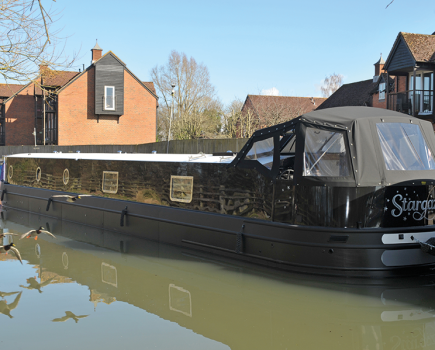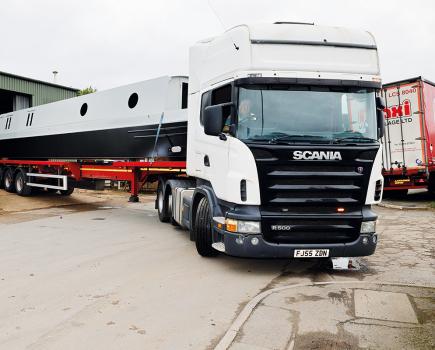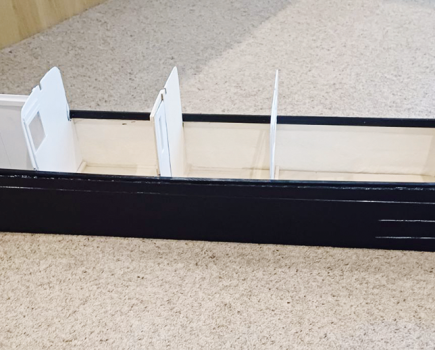What’s the best battery and how many do you need?

Which battery?

We’re often asked “what’s the best battery, how many do I need for my boat and what’s the right alternator?” But the answers are not as clear cut as you might expect

words By Tony Brooks & Pictures by canal boat


You would think they are simple enough questions at face value, but giving the correct answer is a little more complex. There are a number of rules of thumb often bandied about such as the bank capacity being about four times your daily load and the alternator having an output of between one quarter and one third of the bank capacity. This means a 120Ah (Amp hour) daily load consumption would imply a bank size of about 480Ah and the alternator should have an output of between 30 and 40 amps. However, such an answer makes no allowance for your patterns of use and the charging regime. Unless the bank size, your consumption and the charging regime are reasonably well matched you will always tend to suffer problems in one form or another. Batteries are a series of lead grids with lead oxide powder pressed onto them and immersed in an acid, normally sulphuric acid. When discharged the lead oxide combines with the sulphur to form lead sulphate and when charged the sulphur is driven back into the acid leaving lead oxide plates. Unfortunately, the lead sulphate becomes increasingly difficult to reconvert as time goes by until it’s simply not possible to reconvert it. This is known as sulphation and it kills the majority of boat batteries not fitted with long-term, low current charging systems such as a shoreline multistage charger or a solar cell/wind generator. Two further problems are related to that lead powder. Over time it flakes off the plates and builds up in the bottom of the battery, so some more expensive batteries go to some lengths to prevent this. One way is to put the plates inside porous glass fibre envelopes. The plates are also likely to ‘shimmy’ or buckle when subjected to heavy load which again tends to shed material. Some exceptionally expensive batteries have plates formed into tubes or spirals to minimise such movement. The better the plates and powder are supported, the longer the potential life of the battery, so the more expensive batteries should have better internal designs. Batteries also have a finite number of charge discharge cycles. A ‘typical’ open cell leisure battery will only produce a very few hundred cycles whereas the expensive ones have well over 1,000. It is the low cyclic life of typical batteries and the need to optimise their life that leads to the ‘never discharge below 50%’ rule.


Battery Capacity

Most batteries are tested and given a capacity according to how much electricity they can supply when run from fully charged to discharged over 20 hours. Some very expensive ones do the same but only over five hours. The way batteries work means that if they are discharged slowly (over 20 hours, for instance) they can deliver far more electricity than if they were discharged faster (over five hours). This means that of two batteries of the same capacity but tested over different times, the one quoted at the five-hour rate will actually have a much higher effective capacity.

Battery Types
There are two main battery types, open cell wet batteries and a variety of sealed batteries. These are then subdivided into separate technologies and methods of construction. The first group includes ‘ordinary’ batteries and true deep cycle two-volt traction cells. The second group includes sealed ‘maintenance-free’ batteries which are similar to ordinary wet open cell batteries but are sealed, plus Absorbed Glass Mat (AGM) batteries where liquid acid is held in glass fibre wadding, and gel batteries where the acid is in jelly form. The last two types are also known as ‘starved electrolyte’ batteries and this entire group will give a better performance than wet open cell batteries; one problem with them is that an ordinary boater can only test them with a voltmeter so it’s hard to carry out a reliable test. In contrast, open cell batteries can be tested with a hydrometer, which is easy. Combining this with a voltmeter test indicates the degree of sulphation present and the state of the battery. A word of caution if you are thinking of getting gel or AGM batteries; some of these need a lower charging voltage than ‘normal’ batteries so always check the maker’s specification sheet and make sure your charging equipment complies or can be set to comply. All sealed batteries have a critical upper charging voltage that should never be exceeded.
Which is the best battery type?
This section assumes that the bank has adequate capacity. If you rely on engine charging alone, you may well kill the battery by sulphation before it runs out of cyclic capacity, so you might as well choose cheaper wet open cell ‘leisure’-type batteries. If the ability to easily test the batteries yourself is important, then wet, open cell batteries would be a good choice. If you are absolutely sure you can regularly fully recharge the batteries, then the two-volt traction cells should last well over ten years. If you have adequate external charging so that the batteries are regularly fully charged, and as long as you are not concerned about testing them, the AGM or gel batteries should give longer life and better performance.
Image(s) provided by:
Archant







